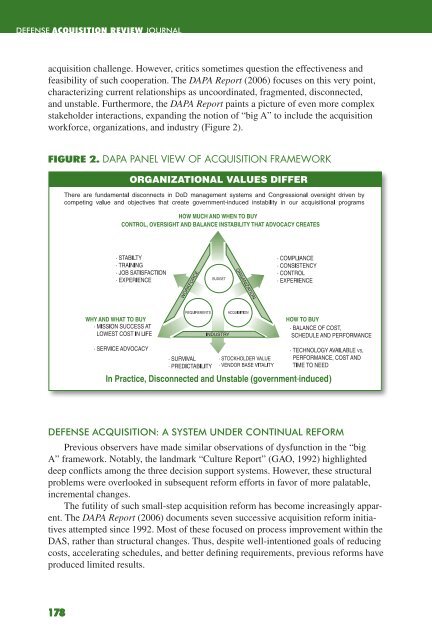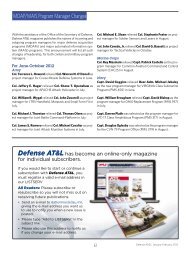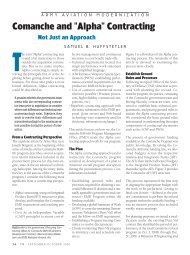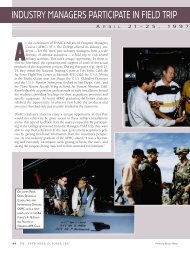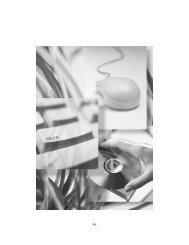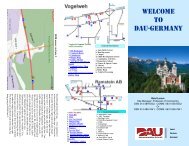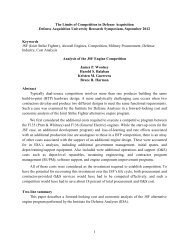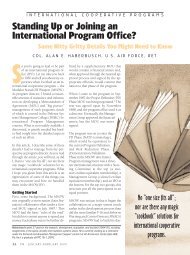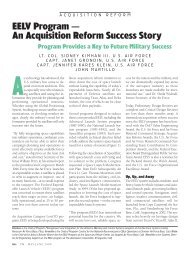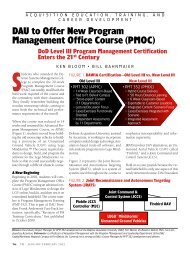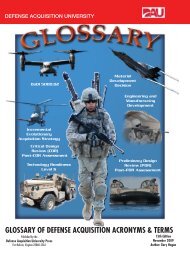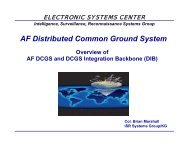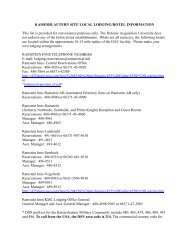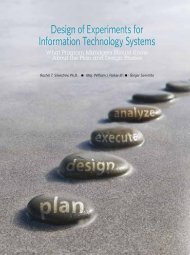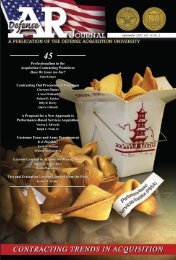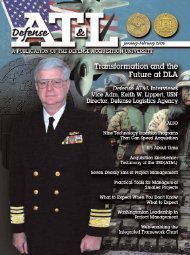Defense ARJ - Defense Acquisition University
Defense ARJ - Defense Acquisition University
Defense ARJ - Defense Acquisition University
You also want an ePaper? Increase the reach of your titles
YUMPU automatically turns print PDFs into web optimized ePapers that Google loves.
<strong>Defense</strong> <strong>Acquisition</strong> Review Journal<br />
acquisition challenge. However, critics sometimes question the effectiveness and<br />
feasibility of such cooperation. The DAPA Report (2006) focuses on this very point,<br />
characterizing current relationships as uncoordinated, fragmented, disconnected,<br />
and unstable. Furthermore, the DAPA Report paints a picture of even more complex<br />
stakeholder interactions, expanding the notion of “big A” to include the acquisition<br />
workforce, organizations, and industry (Figure 2).<br />
fiGuRe 2. dapa panel view of aCQuisition fraMeworK<br />
<strong>Defense</strong> acQuisition: a systeM unDer continual reforM<br />
Previous observers have made similar observations of dysfunction in the “big<br />
A” framework. Notably, the landmark “Culture Report” (GAO, 1992) highlighted<br />
deep conflicts among the three decision support systems. However, these structural<br />
problems were overlooked in subsequent reform efforts in favor of more palatable,<br />
incremental changes.<br />
The futility of such small-step acquisition reform has become increasingly apparent.<br />
The DAPA Report (2006) documents seven successive acquisition reform initiatives<br />
attempted since 1992. Most of these focused on process improvement within the<br />
DAS, rather than structural changes. Thus, despite well-intentioned goals of reducing<br />
costs, accelerating schedules, and better defining requirements, previous reforms have<br />
produced limited results.<br />
178


